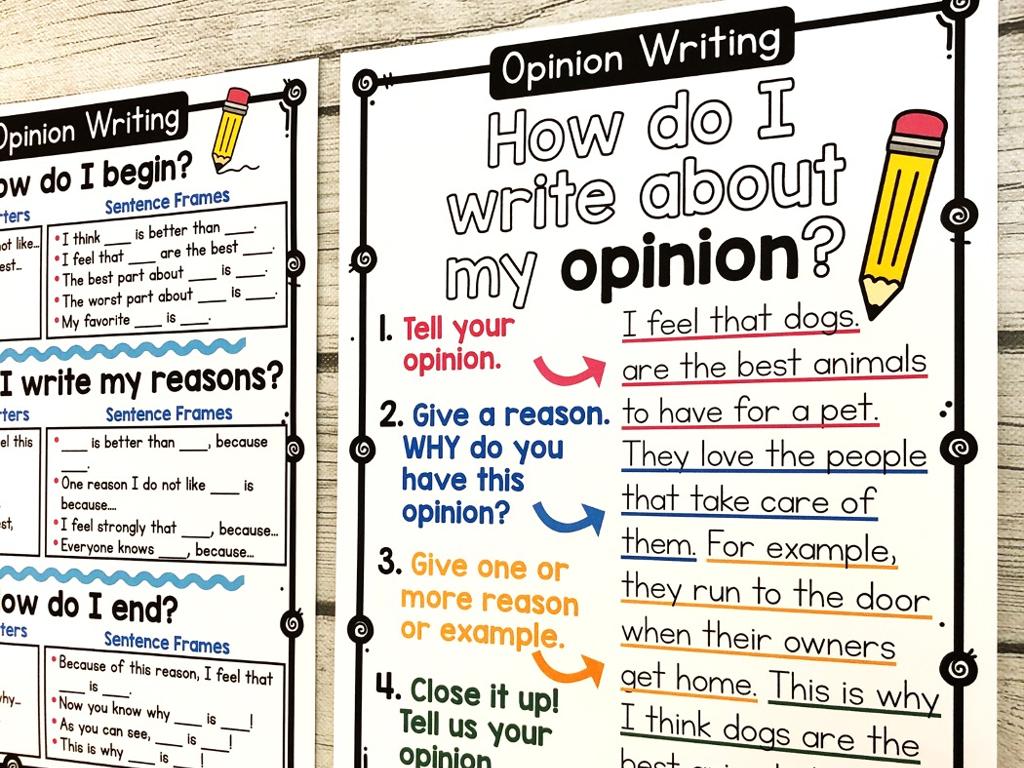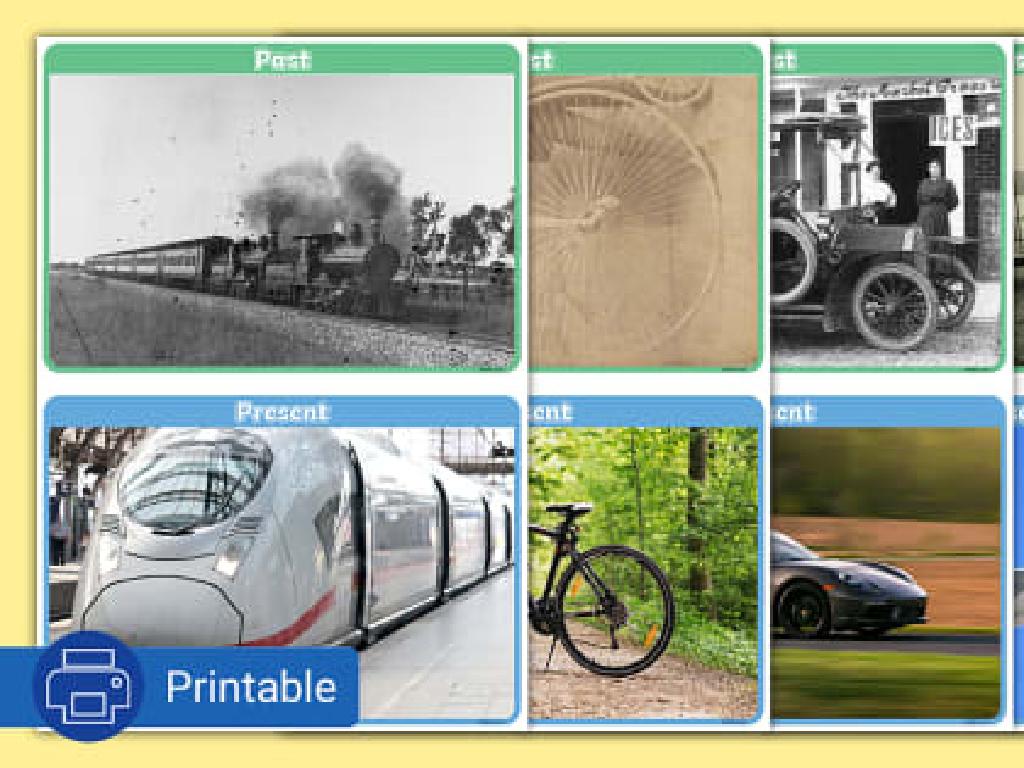Compare Properties Of Materials
Subject: Science
Grade: Fourth grade
Topic: Materials
Please LOG IN to download the presentation. Access is available to registered users only.
View More Content
Exploring Material Properties
– Discover materials in our world
– Why properties matter
– Properties determine how materials are used, like metal for strength or cotton for comfort.
– Choosing materials wisely
– We select materials based on their properties for specific tasks, like glass for windows.
– Activity: Material hunt
– Find and list materials at home or school and guess their properties.
|
This slide introduces the concept of materials science to fourth graders, emphasizing the importance of understanding material properties in everyday life. Begin by discussing the variety of materials they encounter daily. Explain that properties like hardness, flexibility, and conductivity determine how we use different materials. For example, we use rubber for tires because it’s strong and flexible. Encourage students to think critically about why certain materials are chosen for specific purposes, such as plastic for water bottles. Conclude with an interactive activity where students list items made of different materials and discuss their properties, fostering engagement and reinforcing the lesson’s concepts.
Exploring Materials and Their Properties
– Understanding materials
– Substances used to make objects
– Examples of common materials
– Metal, wood, glass, plastic
– Unique properties of materials
– Hardness, flexibility, transparency
– Importance of material properties
|
This slide introduces the concept of materials in the context of science for fourth graders. Begin by explaining that materials are the substances from which all things are made. Provide relatable examples such as metal (bicycles), wood (furniture), glass (windows), and plastic (toys) to help students connect the concept to their everyday lives. Discuss how each material has specific properties like hardness, flexibility, and transparency that make it suitable for certain uses. Emphasize the importance of these properties in deciding which material to use for a particular object or purpose. Encourage students to think of other materials and their properties and how they might be used in different objects.
Exploring Material Properties
– What are properties?
– Characteristics that describe a material, like color or texture.
– Examples: hardness, flexibility
– Hardness determines scratch resistance; flexibility refers to bending without breaking.
– Transparency as a property
– Transparency means seeing through a material; think of windows or glasses.
– Significance of these properties
|
This slide introduces the concept of material properties to fourth-grade students. Begin by explaining that properties are the qualities or characteristics that help us describe and identify different materials. Use relatable examples to explain hardness (like comparing a rock to a sponge) and flexibility (like a rubber band versus a stick). Discuss transparency by showing how clear materials like glass allow light to pass through, making them see-through. Emphasize why understanding these properties is important: it helps us choose the right material for a specific use, like using transparent materials for windows to let light in. Encourage students to think of more examples and consider the properties of materials they use every day.
Exploring Hardness of Materials
– Understanding hardness
– Hardness measures resistance to scratches or dents.
– Diamond vs. sponge
– Diamond is extremely hard, while a sponge is very soft.
– Hard and soft materials
– Think of examples like a hard table or a soft pillow.
– Reflect on daily use
|
This slide introduces the concept of hardness and how it is a measure of a material’s resistance to being scratched or dented. Use diamond and sponge as contrasting examples to illustrate the extremes of the hardness scale. Encourage students to think of objects they encounter in their daily lives that are hard or soft, such as toys, furniture, or sports equipment. This reflection helps them apply the concept of hardness to familiar items, reinforcing their understanding of material properties. During the class discussion, ask students to share their examples and explain why they think those items are hard or soft.
Exploring Flexibility of Materials
– What is flexibility?
– Ability to bend without breaking
– Comparing flexible & rigid items
– Rubber bands bend easily, ceramic plates do not
– Importance of flexible materials
– Flexible materials are useful in many applications
|
This slide introduces the concept of flexibility in materials, which is an important property to consider when selecting materials for various uses. Flexibility refers to the ability of a material to bend without breaking. For example, a rubber band is flexible because it can stretch and bend easily, while a ceramic plate is rigid and will break if bent. Discuss with students why flexibility might be important in everyday objects, such as in clothing, tools, or sports equipment, and how the choice of material affects the functionality and durability of an item. Encourage students to think of other examples of flexible and non-flexible items and consider the advantages and disadvantages of each.
Exploring Transparency in Materials
– What is transparency?
– It’s when light can pass through a material.
– Comparing glass and wood
– Glass lets light through, wood does not.
– Uses of transparent materials
– Windows and eyeglasses are transparent.
– Understanding opaque objects
– Opaque means no light passes through.
|
This slide introduces the concept of transparency in materials, which is a property that determines whether light can pass through an object. Use everyday examples to illustrate the concept: glass is transparent and allows light to pass through, making it useful for windows, while wood is opaque and does not let light through, which is why it’s good for building solid structures. Encourage students to think about and discuss other transparent materials they encounter in their daily lives and why transparency might be important for those objects. This will help them understand the practical applications of material properties in the real world.
Comparing Properties of Materials
– Different materials overview
– Materials like wood, plastic, metal, and glass have unique properties.
– Organize info using a chart
– We’ll use a chart to compare things like hardness, flexibility, and durability.
– Understand materials’ uses
– Knowing properties helps us choose the right material for a job, like metal for strength.
– Determine the best material
– We’ll decide which materials are best for making things like bridges or glasses.
|
This slide is aimed at helping students understand that different materials have different properties, which makes them suitable for specific purposes. Introduce common materials and discuss their properties such as hardness, flexibility, and durability. Use a chart to visually organize this information, which will help students compare and contrast these materials effectively. Discuss practical applications of materials in everyday life, such as why metal is used for construction or plastic for toys. Encourage students to think critically about why certain materials are chosen for specific uses and what properties make them the best choice.
Class Activity: Material Hunt
– Explore classroom for materials
– List properties of found materials
– Hardness, flexibility, texture, color
– Discuss material suitability
– Why is glass used for windows? Why are erasers made of rubber?
– Share findings with the class
|
This activity is designed to help students understand the properties of materials and why certain materials are used for specific objects. Have the students walk around the classroom and identify objects made of different materials such as metal, glass, wood, and plastic. They should touch and feel the objects to list properties like hardness, flexibility, texture, and color. Encourage them to think about why each material is suitable for its purpose, for example, glass is transparent and hard which is why it’s used for windows, and rubber is flexible and can erase pencil marks, making it ideal for erasers. After the hunt, students will share their findings with the class, fostering a discussion on material properties and their applications.
Conclusion: The Significance of Material Properties
– Congratulations on the Material Hunt!
– Understanding properties is crucial
– Properties determine how materials are used
– Choosing the right material matters
– For example, using metal for a magnet, not wood
– Reflect on what we’ve learned
|
This slide wraps up our lesson on the properties of materials. The Material Hunt activity was designed to help students explore and understand the different properties of materials in a fun and engaging way. Emphasize the importance of material properties in everyday life and how they influence the use of materials in various applications. For instance, we use metal for making magnets because it can be magnetized, unlike wood. Encourage students to think about the materials around them and why certain materials are used for specific objects. This understanding is fundamental in science and engineering. As a closing activity, ask students to share one thing they found most interesting about material properties.






